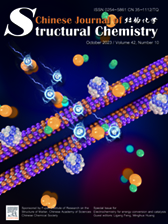
Modulating metal-support interaction between Pt3Ni and unsaturated WOx to selectively regulate the ORR performance
Jinli Chen, Shouquan Feng, Tianqi Yu, Yongjin Zou, Huan Wen*, Shibin Yin* Submit a Manuscript
Guest editors: Ligang Feng*, Minghua Huang*
October 15, 2023
ABSTRACT
Electrochemistry for energy conversion and catalysis has received unprecedented attention in sustainable society development due to its significant role in renewable energy system construction, which includes the fundamental energy technology of fuel cells and electrical storage devices. To drive a specific electrochemical reaction, highly efficient electrode materials are required which can accelerate the reactions by kinetic improvement or intrinsic activity boosting. It is well known that the "Structure Determines Properties" in chemistry, and to obtain high performance for an electrochemical reaction in energy conversion and catalysis, electrode materials with optimal structure should be probed, and the structure-property correlation should be revealed. All these concerns are very important for electrode materials development.
Due to the diverse development in electrochemistry for energy conversion and catalysis, herein, a special issue was proposed and organized by Guest editors of Dr. Ligang Feng and Dr. Minghua Huang. We would like to express our sincere appreciation to all the authors for their contributions. This special issue included 1 short communication, 6 articles and 2 reviews, which covered the varied topics of electrochemical energy conversion and catalysis in terms of the water splitting reaction, fuel cell catalytic reactions, photoelectrochemical reaction, and electrode materials for the battery. Specifically, in the reviews by Prof. Zhao Yan, et al., the challenges and modification strategies of high voltage cathode materials for Li-ion batteries were carefully reviewed; and the recent advance of methanol-assisted water splitting reaction for hydrogen generation was overviewed by Prof. Ligang Feng, et al., which covers the aspects of electrode materials development and technique challenges. For the oxygen reduction reaction, two high-quality works have been included, e.g. the 1D Fe-ZIFs derived Fe–N–C nano stick catalysts were reported by Prof. Qin Kuang, et. al., which showed high activity and stability to catalyze oxygen reaction; the metal support interaction between Pt3Ni and WOx was optimized for oxygen reduction reaction by Prof. Shibin Yin and Huan Wen, where the charge redistribution induced by the unsaturated WOx optimized the intermediates adsorption and activation resulting in a good performance. Prof. Xiang Wu reported a high-performance flexible supercapacitor based on the Co-doped NiMoO4 nanosheet fabricated by facile hydrothermal approach due to the large surface area and porous structure. The selective CO2 reduction to formic acid was reported by modulating the electronic structure of copper phthalocyanine through defective graphene by Prof. Dongjiang Yang, Xiaoliang Zhao, et al., and high catalytic efficiency and structure-activity relationship was carefully discussed and revealed in the report. Prof. Weiqiang Fan, et al contributed to the understanding of the coordination state of controllable decoration of Ni-MOF on TiO2 for photoelectrochemical performance, which would be helpful for the energy conversion efficiency boosting in the Ni-MOF system. In the hydrogen generation from the alkaline electrolyte, a report by Prof. Cheng-Feng Du showed the catalytic performance and mechanism of Ni nanoparticles anchored on Mo2TiC2Tx Mxene for enhanced hydrogen evolution ability. Thanks again to Prof. Shibin Yin, who contributed the other work for 5-hydroxymethylfurfural electrooxidation assisted hydrogen generation by anchoring NiCo alloy nanoparticles on the mesoporous Mo2N nanosheets, which showed a novel strategy for bifunctional catalyst development in sustainable production of hydrogen and high value-added products.
We hope readers will be interested in the contents presented in this special issue and we also would like to express our thanks to the authors and readers, who care about the development of our journal. Due to some reasons, some significant topics were not covered in this issue though we have invited the estimated authors, probably, some of the contributions will probably be included in the subsequent issues. We realized that the content of this issue is not in the perfect state but will do better for future issues. Thanks again to our authors and readers, and your support for this issue would also contribute more to the growth of this journal. We do hope that readers will enjoy the topics presented here and perhaps find inspiration to push their research to the next stage.





